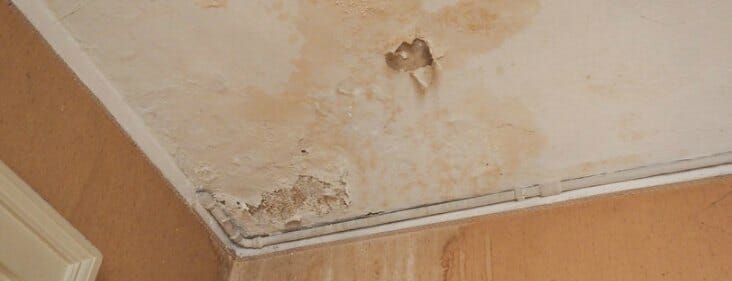Get to Know Half a Dozen Principal Factors For Water Seepage in Your House
Get to Know Half a Dozen Principal Factors For Water Seepage in Your House
Blog Article
Right here below you'll find lots of reliable resources regarding Common Water Leaks In House.

Leakages not just create waste of water but can likewise cause unnecessary damages to your home and also promote undesirable organic growth. However, water leakages may go unnoticed given that most of the pipework in our house is concealed. By looking as well as understanding for daily circumstances that cause leaks, you can secure your residence from future leaks as well as unneeded damages. Today, we will look at 6 leakage creates that may be triggering your pipelines to leak.
Encroaching origins
Many water leaks start outside your house rather than inside it. If you see an abrupt decrease in water pressure, say in your faucet, require time to head out and analyze your backyard. You may notice wet patches or sinkholes in your yard, which may indicate that tree roots are attacking water lines triggering water to seep out. You can have your plumber look for intrusion, especially if you have trees or bushes near your residential property.
Corroded water supply
This might be the reason of discoloration or warping on your water pipes. If our plumbing system is old, think about changing the pipes considering that they are at a higher risk of rust than the newer models.
Malfunctioning Pipeline Joints
The factor at which your pipelines link is often the weakest link in the waterline. Pipeline joints can wear away in time, resulting in water leakages. The majority of pipe joints are not quickly noticeable. If you have noisy pipes that make ticking or banging sounds, especially when the hot water is switched on, your pipeline joints are possibly under a lot of pressure. It is a good idea to have your plumber evaluate your system once a year.
Immediate temperature changes.
Severe temperature level modifications in our pipes can trigger them to increase and get suddenly. This expansion as well as contraction may create cracks in the pipelines, particularly if the temperature level are below cold.
Poor Water Connectors
Sometimes, a leak can be caused by loose pipes and pipelines that supply your appliances. Generally, changing is what causes the loose water Connections. You could discover when it comes to a washing machine, a pipe may spring a leak because of trembling during the spin cycle. In case of a water links leakage, you might observe water running directly from the supply line or puddles around your devices.
Clogged Drains
Clogged drains might be irritating and also inconveniencing, but they can sometimes end up causing an overflow leading to break pipelines. Maintain getting rid of any materials that might drop your drains that can block them to avoid such inconveniences.
All the above are reasons for leaks yet not all water leakages result from plumbing leakages; some leaks could originate from roofing system leaks. All leaks ought to be fixed quickly to stay clear of water damage.
Leaks not just cause waste of water but can also create unnecessary damages to your house as well as advertise undesirable natural development. By looking and also recognizing for everyday circumstances that cause leaks, you can safeguard your residence from future leakages and unneeded damages. Today, we will certainly look at six leakage causes that might be causing your pipes to drip.
At times, a leak can be triggered by loose hose pipes and pipelines that provide your home appliances. In case of a water links leakage, you might notice water running straight from the supply line or puddles around your devices.
How To Check For Water Leak In Your Home
How To Check for Leaks
The average household's leaks can account for nearly 10,000 gallons of water wasted every year and ten percent of homes have leaks that waste 90 gallons or more per day. Common types of leaks found in the home are worn toilet flappers, dripping faucets, and other leaking valves. These types of leaks are often easy to fix, requiring only a few tools and hardware that can pay for themselves in water savings. Fixing easily corrected household water leaks can save homeowners about 10 percent on their water bills.
To check for leaks in your home, you first need to determine whether you're wasting water and then identify the source of the leak. Here are some tips for finding leaks:
Take a look at your water usage during a colder month, such as January or February. If a family of four exceeds 12,000 gallons per month, there are serious leaks.
Check your water meter before and after a two-hour period when no water is being used. If the meter changes at all, you probably have a leak.
Identify toilet leaks by placing a drop of food coloring in the toilet tank. If any color shows up in the bowl after 10 minutes, you have a leak. (Be sure to flush immediately after the experiment to avoid staining the tank.)
Examine faucet gaskets and pipe fittings for any water on the outside of the pipe to check for surface leaks.
Undetected water leaks can happen without the home or business owner even realizing. If you suspect a water leak, but not able to find the source. It is time to contact a professional water leak detection service, The Leak Doctor.
How To Find a Water Leak In Your Home
https://www.leakdoctor.com/blog/How-To-Check-For-Water-Leak-In-Your-Home_AE197.html

Do you appreciate reading about How to Find Water Leaks? Put feedback down the page. We would be glad to see your responses about this piece. In hopes that you visit us again in the near future. Feel free to take the time to promote this write-up if you appreciated it. Thanks a lot for your time. Come back soon.
Pro service, one dial away. Report this page